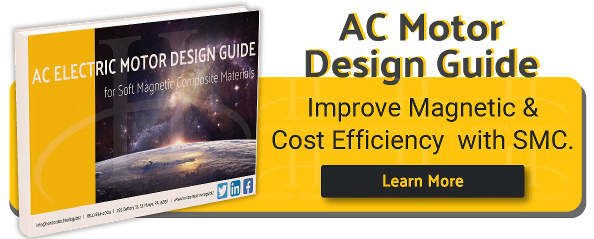Welcome back to our PM Component Spotlight series, where we ID ideal components for metal powder manufacturing.
Powder metal has been matched against electrical steel (aka steel laminations) on more than one occasion. Certain powder metal materials, such as soft magnetic composites, are a viable alternative to laminations for rotors, stators, and more. Unfortunately, many engineers don’t realize it yet.
In many cases, soft magnetic composite (SMC) powder is not a cost-effective or good 1:1 replacement material for steel electrical laminations. But, what if you could marry SMCs with laminations to get an answer where 1 + 1 = 3?
For our Winter 2020 Spotlight, we unveil something that’s more of an opportunity than a case study of a finished application. But that doesn’t make it any less exciting!
The Problem
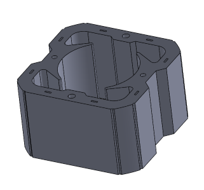 Consider this hypothetical.
Consider this hypothetical.
You want to add or refine a detail in your electric motor design, but it’s not ideal for lamination materials. That’s where soft magnetic composites (SMCs) could save the day.
Sounds great! You’ve already heard or read all the good stuff soft magnetic composites can do for performance. Unfortunately, you analyzed the current design and realized that a 1-to-1 replacement of your lamination with an SMC is not a practical solution. You still want more performance out of your design, but how?
It feels like you’re chasing your tail, right? If only there were some way to balance both SMCs and lamination steel to get low cost and performance …
The Ceiling Fan Motor Dilemma
Now let’s use a more specific example: a ceiling fan motor.
Watch the video on YouTube here.
Inside an electric motor, electric current passes through the copper wire to create a magnetic field that causes rotation, and ultimately torque and horsepower of the motor. To more efficiently use the current and wire, it’s often embedded inside a ferromagnetic material that multiplies the magnetic field in relation to the material’s permeability. (Remember: Air has a permeability of 1; steel laminations have a permeability greater than 1,000.) Engineers usually refer to this embedded copper wiring as the windings of the motor.
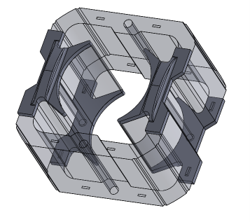 In many single-phase electric motors, the copper wire is either a single or a minimum number of continuous strands of wire that is wrapped through the slots of the rotor and the stator. As wire if feed (or wrapped) from one slot to an adjacent position, the wire is pulled through the exit end of one slot and then bent to feed the next slot (this process is repeated many times for each slot).
In many single-phase electric motors, the copper wire is either a single or a minimum number of continuous strands of wire that is wrapped through the slots of the rotor and the stator. As wire if feed (or wrapped) from one slot to an adjacent position, the wire is pulled through the exit end of one slot and then bent to feed the next slot (this process is repeated many times for each slot).
Remember, the lamination assembly is a build-up of individual sheets; thus, the top of the lamination assembly is flat. This bending of the wire must be done with considerable care so as not to break the insulation layer on the wire. Thus, the bending or wrapping of the stator/rotor results in a loop of wire above the lamination stack that is often referred to as the end turns. Now, you have a motor with electric wire embedded in the lamination core, but you also have the end turn effect with the wire having no ferromagnetic material to multiple the effect relative to air.
In most motors, designers often neglect this end turn effect. … But what if you could somehow maximize the copper and current effect in the end turns? Could this result in a more efficient electric motor? Yes, you could assemble small pieces of laminations to fill this void, but that results in considerable assembly cost. A possible solution is the use of a design that joins the best of laminations with the best of SMCs.
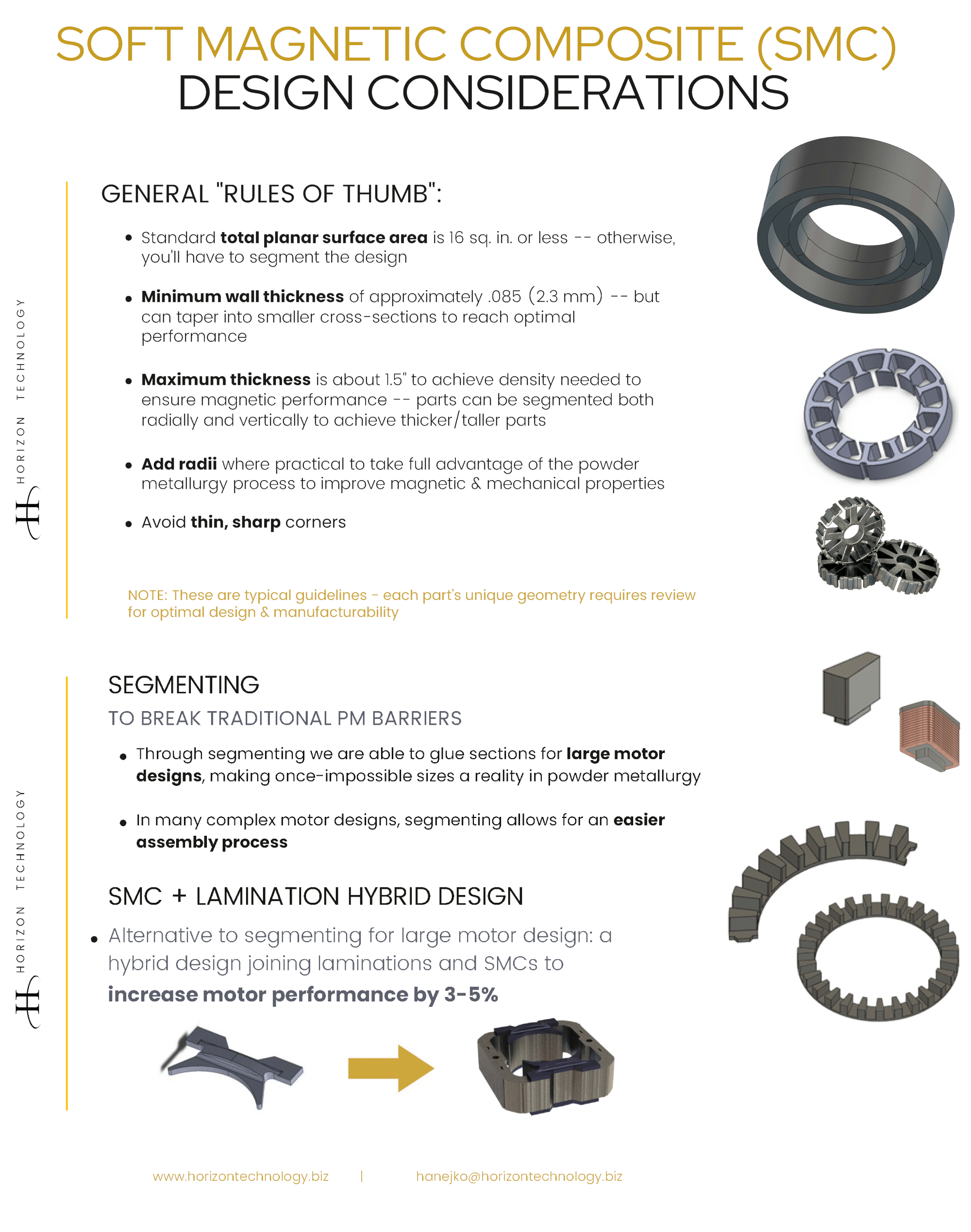
The Solution
Air has a permeability of 1, but iron has a permeability of 1,000. With all those wires up in a ceiling fan’s motor -- and all that open space -- there’s an opportunity to add a component made from iron-based SMC powder.
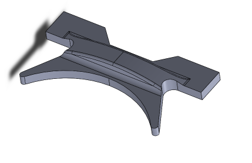 Our proposed solution asks the question can we) add a soft magnetic composite component into that open space under the wire -- in combination with the lamination -- to improve the efficiency of the motor. It would be virtually impossible to accomplish that with a pure lamination assembly, but it’s actually fairly simple with a powder metal part.
Our proposed solution asks the question can we) add a soft magnetic composite component into that open space under the wire -- in combination with the lamination -- to improve the efficiency of the motor. It would be virtually impossible to accomplish that with a pure lamination assembly, but it’s actually fairly simple with a powder metal part.
With the proposed design above, you combine SMC technology and laminations into a hybrid design that effectively uses the free end turns of the stator windings. The SMC insert would increase the efficiency of the copper wire windings by capitalizing on the significantly higher permeability of the SMC relative to air. Now all of the copper windings are encased in either laminations or SMCs to produce a better motor with minimal cost.
Using a hybrid of soft magnetic composite and lamination helps you achieve electric motor efficiency previously impossible with steel laminations alone -- or many other material processes, for that matter. The ability to use less lamination steel helps you get more mileage out of your material.
By the way … are you throwing away a lot of lamination material when you stamp your current design? You’ll potentially see a cost savings by moving toward a combination assembly.
It’s not just the motor manufacturer that benefits from combo assemblies. The life cycle of the motor will extend far beyond your current design, which is a huge selling point for the end consumer. If you achieve even 5% greater efficiency, over a 20-to-30-year life of the motor, there will be a huge savings over the slightly higher up-front cost.
How Can You Use SMCs?
While the ceiling fan motor design is the test subject here, you can apply the concept to other electric motor components.
How can you use soft magnetic composite or another powder metallurgy process to improve your design? The free visual guide below is an exciting look into how soft magnetic materials can change the way you create.

